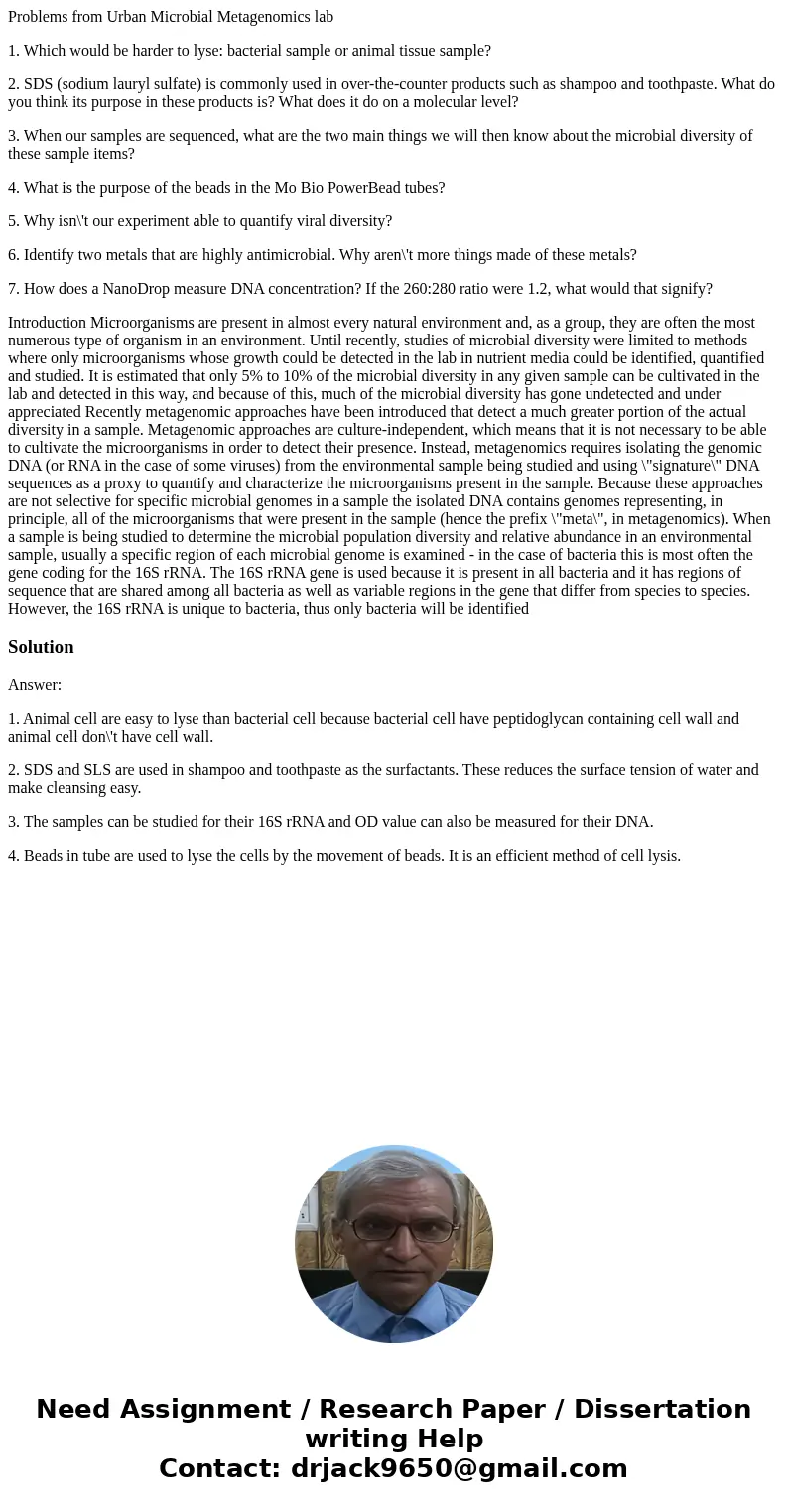Problems from Urban Microbial Metagenomics lab 1 Which would
Problems from Urban Microbial Metagenomics lab
1. Which would be harder to lyse: bacterial sample or animal tissue sample?
2. SDS (sodium lauryl sulfate) is commonly used in over-the-counter products such as shampoo and toothpaste. What do you think its purpose in these products is? What does it do on a molecular level?
3. When our samples are sequenced, what are the two main things we will then know about the microbial diversity of these sample items?
4. What is the purpose of the beads in the Mo Bio PowerBead tubes?
5. Why isn\'t our experiment able to quantify viral diversity?
6. Identify two metals that are highly antimicrobial. Why aren\'t more things made of these metals?
7. How does a NanoDrop measure DNA concentration? If the 260:280 ratio were 1.2, what would that signify?
Introduction Microorganisms are present in almost every natural environment and, as a group, they are often the most numerous type of organism in an environment. Until recently, studies of microbial diversity were limited to methods where only microorganisms whose growth could be detected in the lab in nutrient media could be identified, quantified and studied. It is estimated that only 5% to 10% of the microbial diversity in any given sample can be cultivated in the lab and detected in this way, and because of this, much of the microbial diversity has gone undetected and under appreciated Recently metagenomic approaches have been introduced that detect a much greater portion of the actual diversity in a sample. Metagenomic approaches are culture-independent, which means that it is not necessary to be able to cultivate the microorganisms in order to detect their presence. Instead, metagenomics requires isolating the genomic DNA (or RNA in the case of some viruses) from the environmental sample being studied and using \"signature\" DNA sequences as a proxy to quantify and characterize the microorganisms present in the sample. Because these approaches are not selective for specific microbial genomes in a sample the isolated DNA contains genomes representing, in principle, all of the microorganisms that were present in the sample (hence the prefix \"meta\", in metagenomics). When a sample is being studied to determine the microbial population diversity and relative abundance in an environmental sample, usually a specific region of each microbial genome is examined - in the case of bacteria this is most often the gene coding for the 16S rRNA. The 16S rRNA gene is used because it is present in all bacteria and it has regions of sequence that are shared among all bacteria as well as variable regions in the gene that differ from species to species. However, the 16S rRNA is unique to bacteria, thus only bacteria will be identifiedSolution
Answer:
1. Animal cell are easy to lyse than bacterial cell because bacterial cell have peptidoglycan containing cell wall and animal cell don\'t have cell wall.
2. SDS and SLS are used in shampoo and toothpaste as the surfactants. These reduces the surface tension of water and make cleansing easy.
3. The samples can be studied for their 16S rRNA and OD value can also be measured for their DNA.
4. Beads in tube are used to lyse the cells by the movement of beads. It is an efficient method of cell lysis.

 Homework Sourse
Homework Sourse